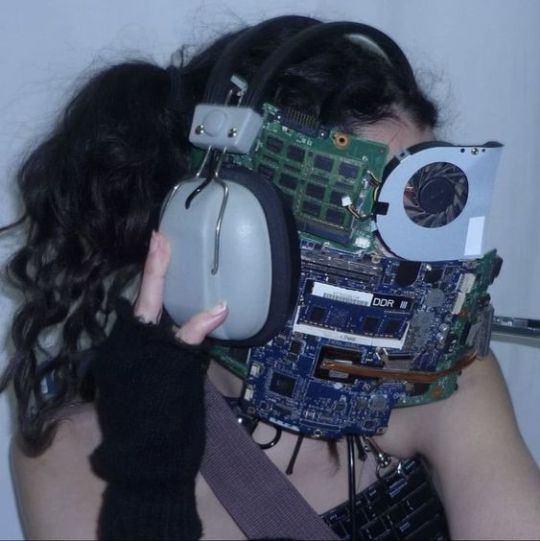#*tech
Text


"Cyber Channel" Windows Media Player Skin
#art#cybercore#cyber y2k#design#graphic design#graphics#illustration#kaybug#media player#microsoft#tech#technology#y2kcore#y2k aesthetic#y2k art#y2k core#y2k cyber#y2k design#y2k futurism#y2k graphics#y2k#y2k nostalgia
476 notes
·
View notes
Text
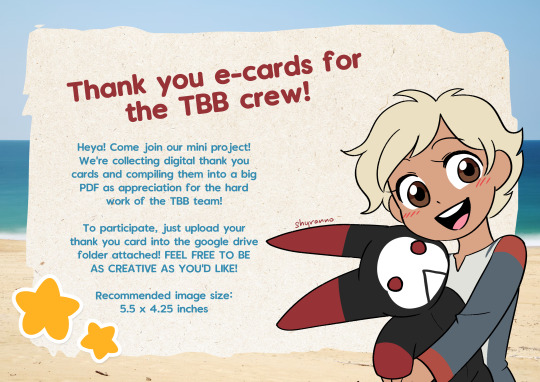
Please feel free to draw, put stickers, use Canva, etc! Be as creative as you'd like, and write as much or as little as you want! Here is the google drive:
https://drive.google.com/drive/folders/16MCDIrenA7BI6EikxmnDjkjDP98xb5Cc?usp=drive_link
Deadline: 30th April 2024
Let's show our appreciation together! :DD
399 notes
·
View notes
Note
falling to my knees begging for fives crumbs
Instructions unclear, I drew thighs

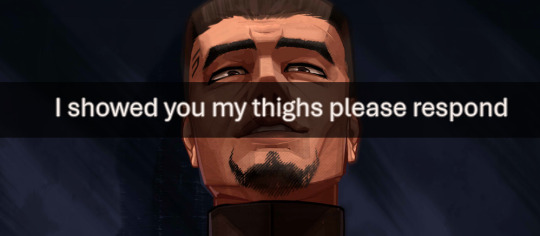
#ask#I forgot about the falling on your knees part I'm sorry I would've chosen a different angle if i did#I love the ask thing it's the best thing about tumblr#Clone Fives#Arc Trooper Fives#captain rex#clone Jesse#Clone Hardcase#clone kix#clone trooper#Ahsoka Tano#Ahsoka#my art#clonesuperiority#the bad batch#the bad batch season 3#TBB#the bad batch spoilers#tbb spoilers#tbb omega#tbb hunter#tbb crosshair#clone force 99#star wars the clone wars#star wars#the clone wars#clone wars#echo#tech#omega
280 notes
·
View notes
Text

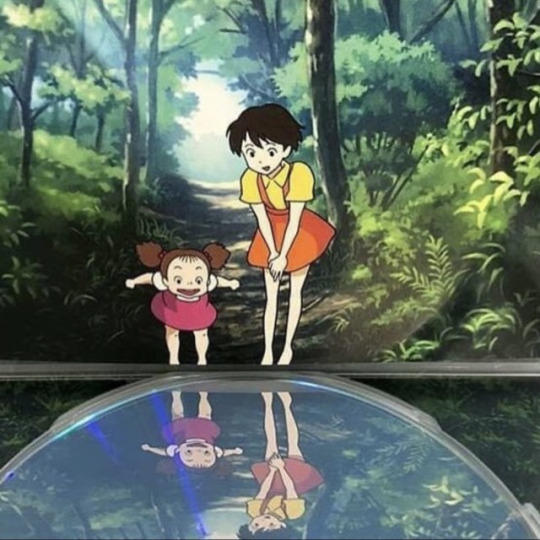
Studio Ghibli: ‘My Neighbor Totoro’ DVD (2006)
#studio ghibli#my neighbor totoro#fantasy#fantasycore#forestcore#japan#japanese#anime#animation#art#dvd#disc#tech#technology#techcore#tech aesthetic#hayao miyazaki#cute#cutecore#kawaii#kawaiicore
358 notes
·
View notes
Text
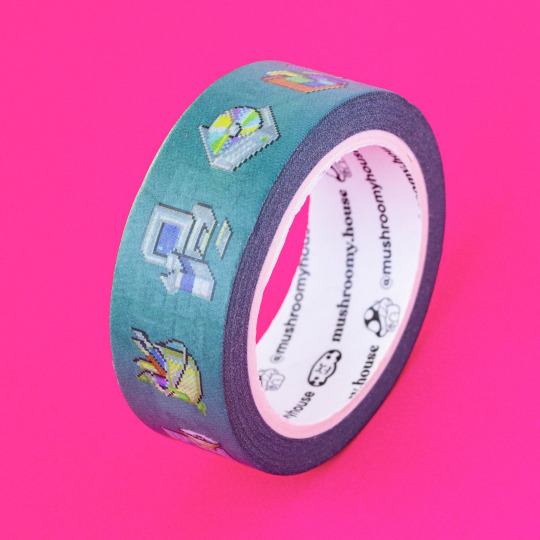

NFTs? AI? What the hell is a Crypto????????
I miss simpler times 😢
Go back to the days of dial up and CD-ROMs 🥹 Old computer washi tape!
💾mush.house/margotfink💽
#pc#computer#gamer#retro#retrotech#vaporwave#pixel#pixelart#98#tech#oldschool#crt#nerd#geek#washi#indieart#washitape#scrapbooking#stationery#nostalgia#icons#design#90s#indieartist#mushroomy#artistsontumblr#cute#artshop#gift#software
273 notes
·
View notes
Text
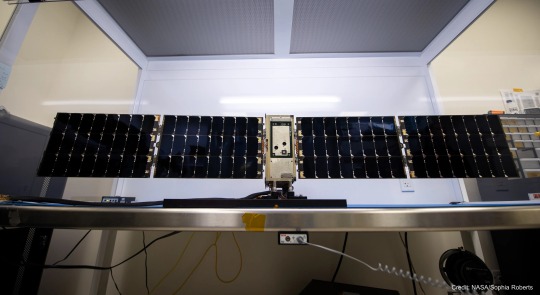
Tiny BurstCube's Tremendous Travelogue
Meet BurstCube! This shoebox-sized satellite is designed to study the most powerful explosions in the cosmos, called gamma-ray bursts. It detects gamma rays, the highest-energy form of light.
BurstCube may be small, but it had a huge journey to get to space.
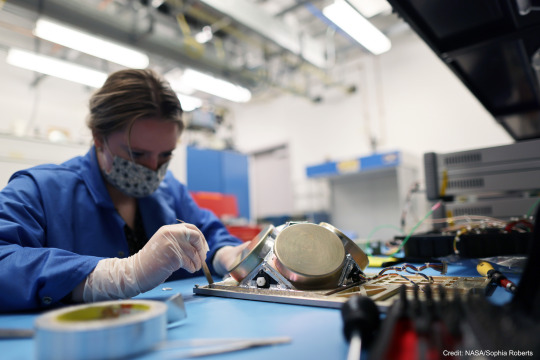
First, BurstCube was designed and built at NASA’s Goddard Space Flight Center in Greenbelt, Maryland. Here you can see Julie Cox, an early career engineer, working on BurstCube’s gamma-ray detecting instrument in the Small Satellite Lab at Goddard.
BurstCube is a type of spacecraft called a CubeSat. These tiny missions give early career engineers and scientists the chance to learn about mission development — as well as do cool science!
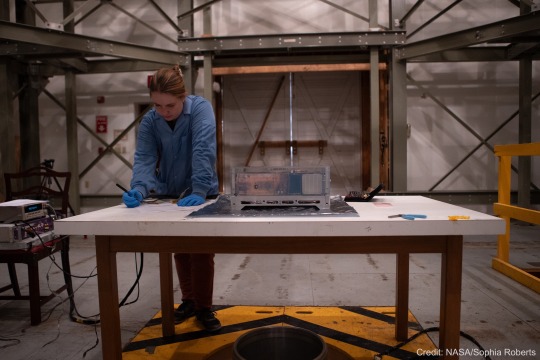
Then, after assembling the spacecraft, the BurstCube team took it on the road to conduct a bunch of tests to determine how it will operate in space. Here you can see another early career engineer, Kate Gasaway, working on BurstCube at NASA’s Wallops Flight Facility in Virginia.
She and other members of the team used a special facility there to map BurstCube’s magnetic field. This will help them know where the instrument is pointing when it’s in space.
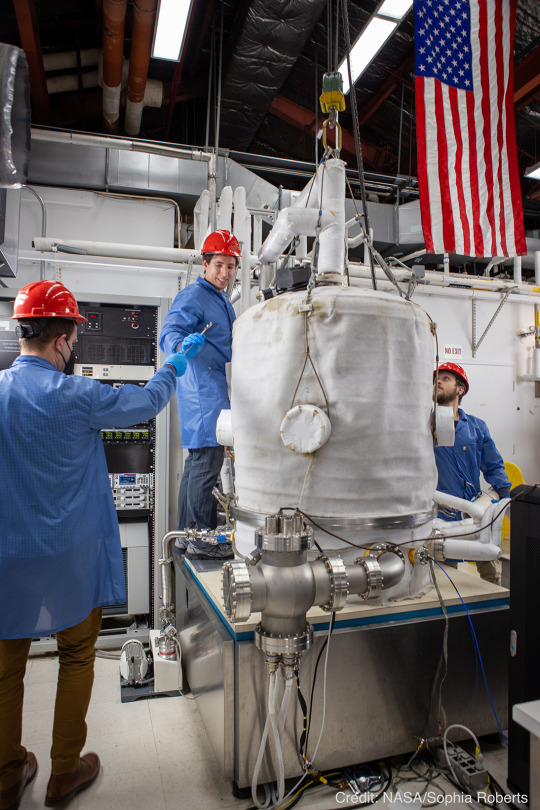
The next stop was back at Goddard, where the team put BurstCube in a vacuum chamber. You can see engineers Franklin Robinson, Elliot Schwartz, and Colton Cohill lowering the lid here. They changed the temperature inside so it was very hot and then very cold. This mimics the conditions BurstCube will experience in space as it orbits in and out of sunlight.
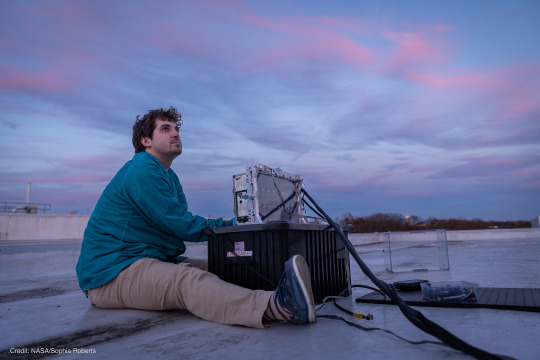
Then, up on a Goddard rooftop, the team — including early career engineer Justin Clavette — tested BurstCube’s GPS. This so-called open-sky test helps ensure the team can locate the satellite once it’s in orbit.
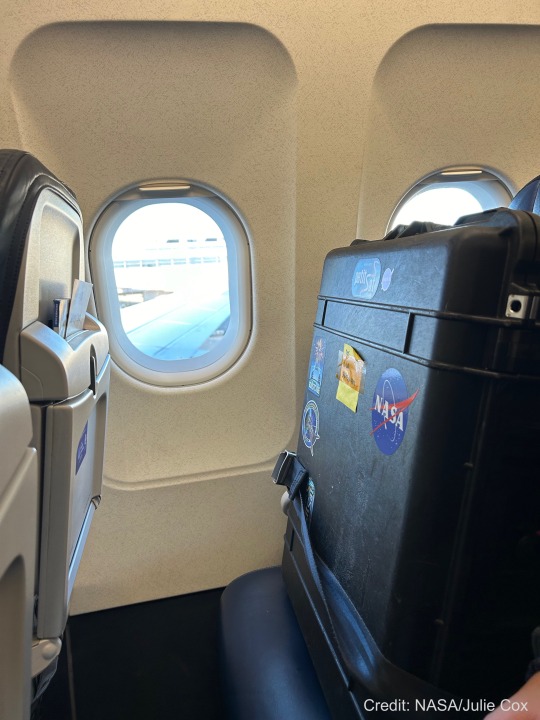
The next big step in BurstCube’s journey was a flight to Houston! The team packed it up in a special case and took it to the airport. Of course, BurstCube got the window seat!

Once in Texas, the BurstCube team joined their partners at Nanoracks (part of Voyager Space) to get their tiny spacecraft ready for launch. They loaded the satellite into a rectangular frame called a deployer, along with another small satellite called SNoOPI (Signals of Opportunity P-band Investigation). The deployer is used to push spacecraft into orbit from the International Space Station.
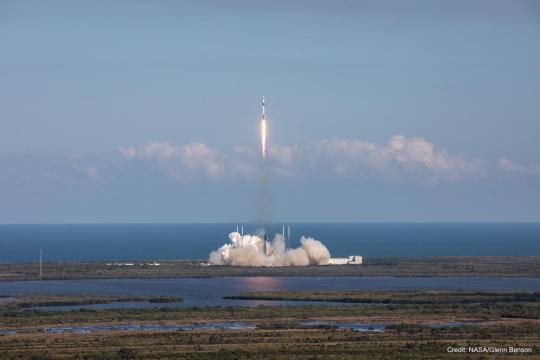
From Houston, BurstCube traveled to Cape Canaveral Space Force Station in Florida, where it launched on SpaceX’s 30th commercial resupply servicing mission on March 21, 2024. BurstCube traveled to the station along with some other small satellites, science experiments, as well as a supply of fresh fruit and coffee for the astronauts.
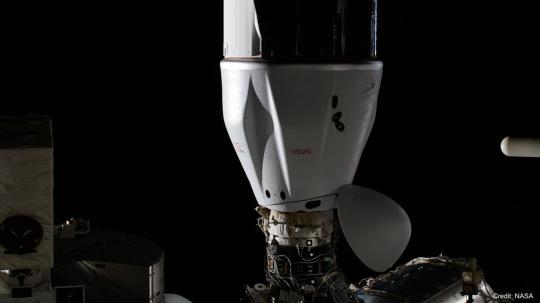
A few days later, the mission docked at the space station, and the astronauts aboard began unloading all the supplies, including BurstCube!
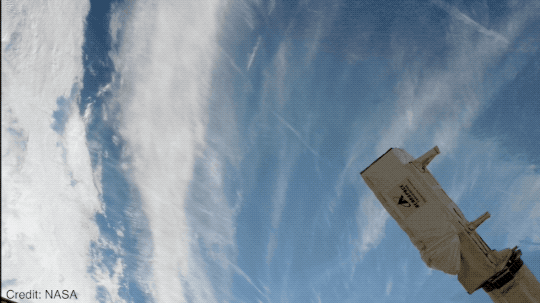
And finally, on April 18, 2024, BurstCube was released into orbit. The team will spend a month getting the satellite ready to search the skies for gamma-ray bursts. Then finally, after a long journey, this tiny satellite can embark on its big mission!
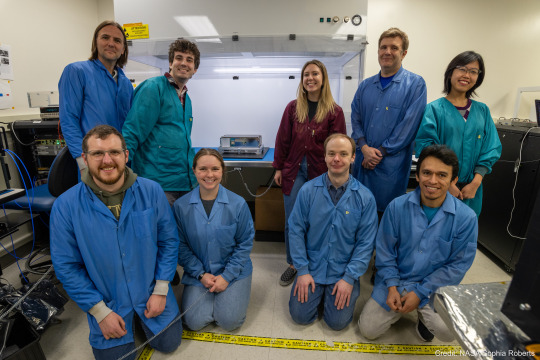
BurstCube wouldn’t be the spacecraft it is today without the input of many early career engineers and scientists. Are you interested in learning more about how you can participate in a mission like this one? There are opportunities for students in middle and high school as well as college!
Keep up on BurstCube’s journey with NASA Universe on X and Facebook. And make sure to follow us on Tumblr for your regular dose of space!
#tech#technology#dream job#jobseekers#NASA#space#spaceblr#universe#astronomy#science#gamma ray bursts#cubesat#smallsat#launch
190 notes
·
View notes
Text
Spoilers episode 14
.
.
.
“Echo. That’s your name, isn’t it?”
Her voice QUIVERING when she says this made me sob.
Omg.
I wasn’t expecting them teaming up and now I would die for both of them. LET’S GO EMERIE!
#the bad batch#star wars#tbb tech#tbb hunter#tbb echo#tbb wrecker#tbb crosshair#tbb omega#tech#wrecker#emerie#emerie karr#tbb emerie#HOW ARE WE SUPPOSED TO WAIT ANOTHER WEEK!!
151 notes
·
View notes
Text


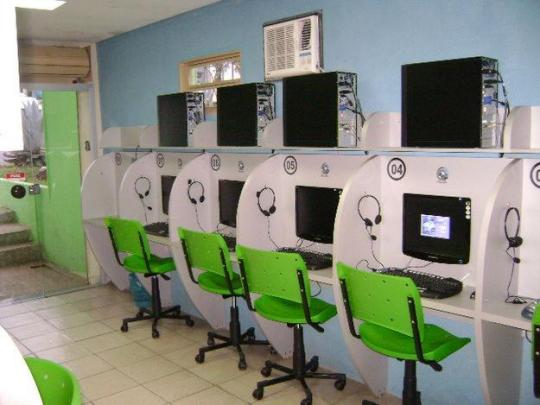

2000's brazilian Lan House
#lan house#cyber cafe#cyber café#retro#vintage#90s#2000s#y2k#oldweb#old web#oldtech#old tech#nostalgia#nostalgia core#tech#web#computer#windows#windowscore#windows core#web core#webcore#techcore#tech core#microsoft#brasil#brazil#latin america#south america
157 notes
·
View notes
Text

Data center in Dresden, East Germany, 1973.
(Deutsche Fotothek)
179 notes
·
View notes
Text
hello sharks (jennifer corbett) i’m asking for an investment of 1million credits (the last two episodes to be longer than an hour total) with an ownership of 99% (revealing CX-2 as Tech) in exchange I won’t be admitted to the psych ward <3
#star wars#sw tbb#tbb#the bad batch#bad batch#tbb crosshair#tbb hunter#tbb omega#tbb tech#tbb wrecker#wrecker bad batch#tech is clone x trust#tech is alive#tech#crosshair tbb#crosshair the bad batch#the bad batch crosshair#hunter tbb#tbb echo#echo#arc trooper echo#bad batch echo#the bad batch season 3#star wars the bad batch#jennifer corbett#shark tank#hello sharks#tech is cx2
112 notes
·
View notes
Text

Windows media player
#art#blue#design#frutiger aero#graphic design#graphics#illustration#media player#microsoft#screenshot#techcore#tech#technology#vector#windows media player
142 notes
·
View notes
Text
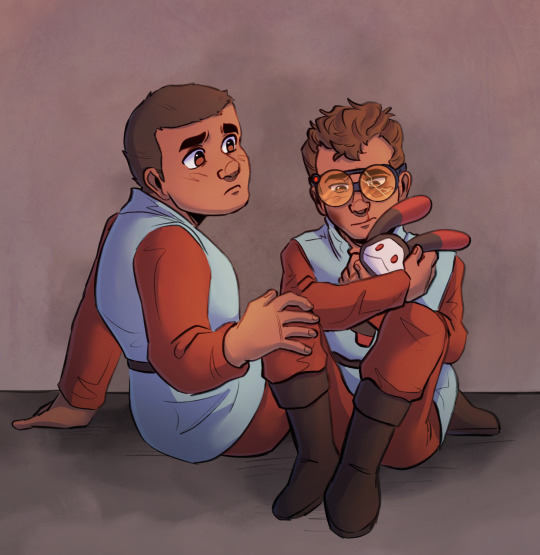

cadet batch :)) <3
#the bad batch#star wars#tbb#star wars fanart#tbb fanart#tech tbb#the bad batch fanart#tbb tech#tech#crosshair#crosshair tbb#wrecker tbb#tbb wrecker#hunter tbb#tbb hunter#hunter#wrecker#gorlics art
119 notes
·
View notes
Text
What if there was plastic-like material that could absorb excess nutrients from water and be used as a fertilizer when it decomposes? That product—a "bioplastic" material—has been created by University of Saskatchewan (USask) chemistry professor Dr. Lee Wilson and his research team, as detailed in a paper recently published in RSC Sustainability. The research team includes Ph.D. candidate Bernd G. K. Steiger, BSc student Nam Bui and postdoctoral fellow trainee Bolanle M. Babalola.
"We've made a bioplastic material that functions as an absorbent and it takes phosphate out of water, where elevated levels of phosphate in surface water is a huge global water security issue," he said. "You can harvest those pellets and distribute them as an agricultural fertilizer."
Continue Reading.
91 notes
·
View notes
Text

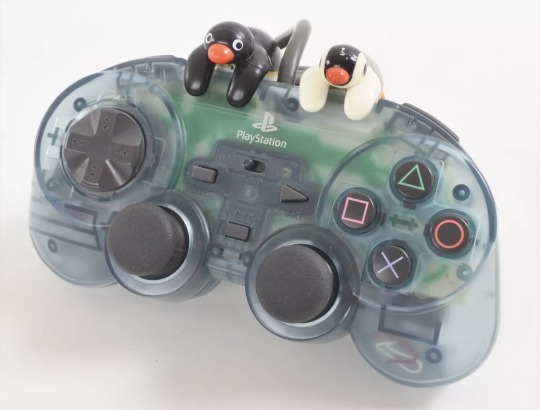
SONY: Japanese Exclusive ‘Pingu’ PS1 Controllers (1999)
#sony#japan#pingu#kawaii#tech#technology#transparent#transparent tech#techcore#tech aesthetic#clear tech#electronics#aesthetic#japanese#video games#gamer#gameblr#gamers of tumblr#90s#1999#90s japan#90s aesthetic#90s kids#2000s kid#nostalgia#ps1#playstation#playstation 1#psone#psx
122 notes
·
View notes
Text
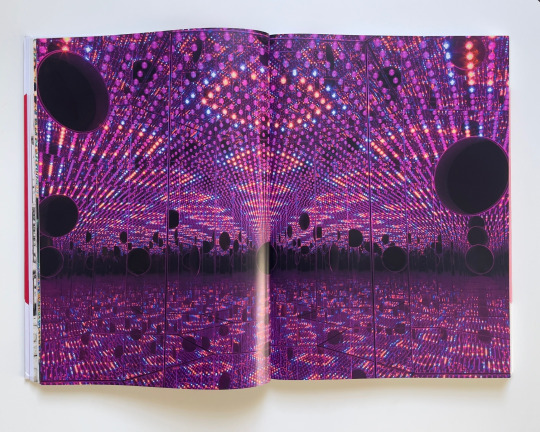


Yayoi Kusama: ‘Longing For Eternity’ (2017)
#yayoi kusama#art#japan#artist#lights#dreamcore#tech#techcore#technology#books#art book#art exhibition#japanese artist
198 notes
·
View notes
